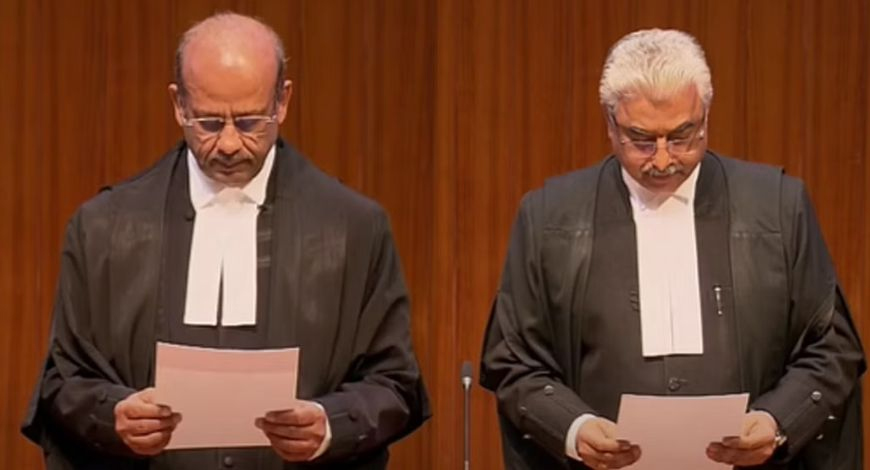Chief Justice of India D.Y. Chandrachud gave two new Supreme Court judges their oaths of office on Monday. As a result, the supreme court now has all necessary judges.
Justices Rajesh Bindal and Aravind Kumar took the oath during a swearing-in ceremony held in the Supreme Court premises.
With the appointment of two judges, the total strength of the Supreme Court rises to 34, fulfilling its full capacity.
Now, The top court will achieve its full strength of 34 judges, including the Chief Justice of India, after a gap of nine months.
The names of the two judges were recommended for elevation as apex court judges by the Supreme Court Collegium on January 31.
Before being elevated as a judge of the Supreme Court, Justice Bindal was the Chief Justice of the Allahabad High Court. Justice Kumar, meanwhile, was the Chief Justice of the Gujarat High Court.
Last week, five new judges of the Supreme Court—Justices Pankaj Mithal, Sanjay Karol, P. V. Sanjay Kumar, Ahsanuddin Amanullah, and Manoj Misra—took oaths amid a face-off between the government and the judiciary over the process of appointing judges to the Supreme Court and the 25 high courts.
Both the apex court and the government have been vocal about their differences over the Collegium system of appointment of judges in the higher judiciary.
The Modi government had sought to replace the Collegium system of appointing Supreme Court and High Court judges with a new method through the NJAC law.







